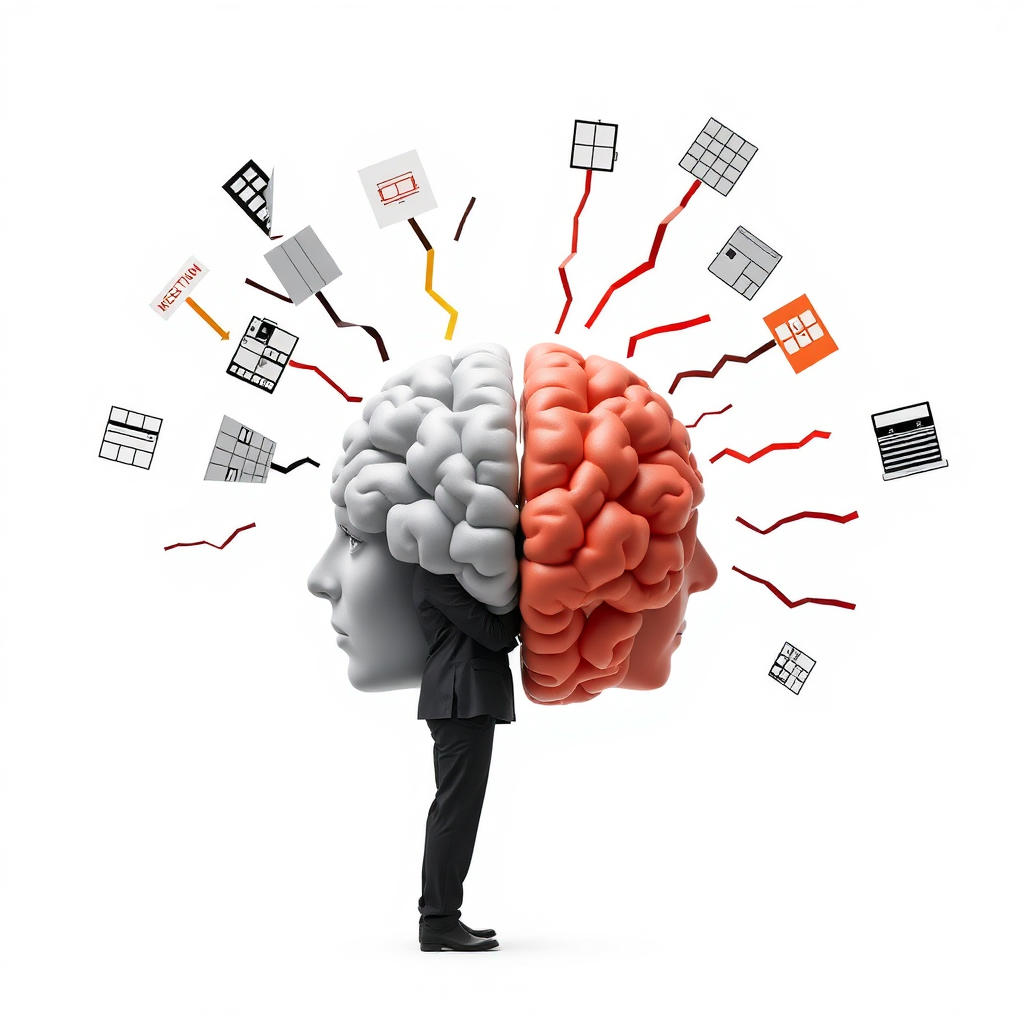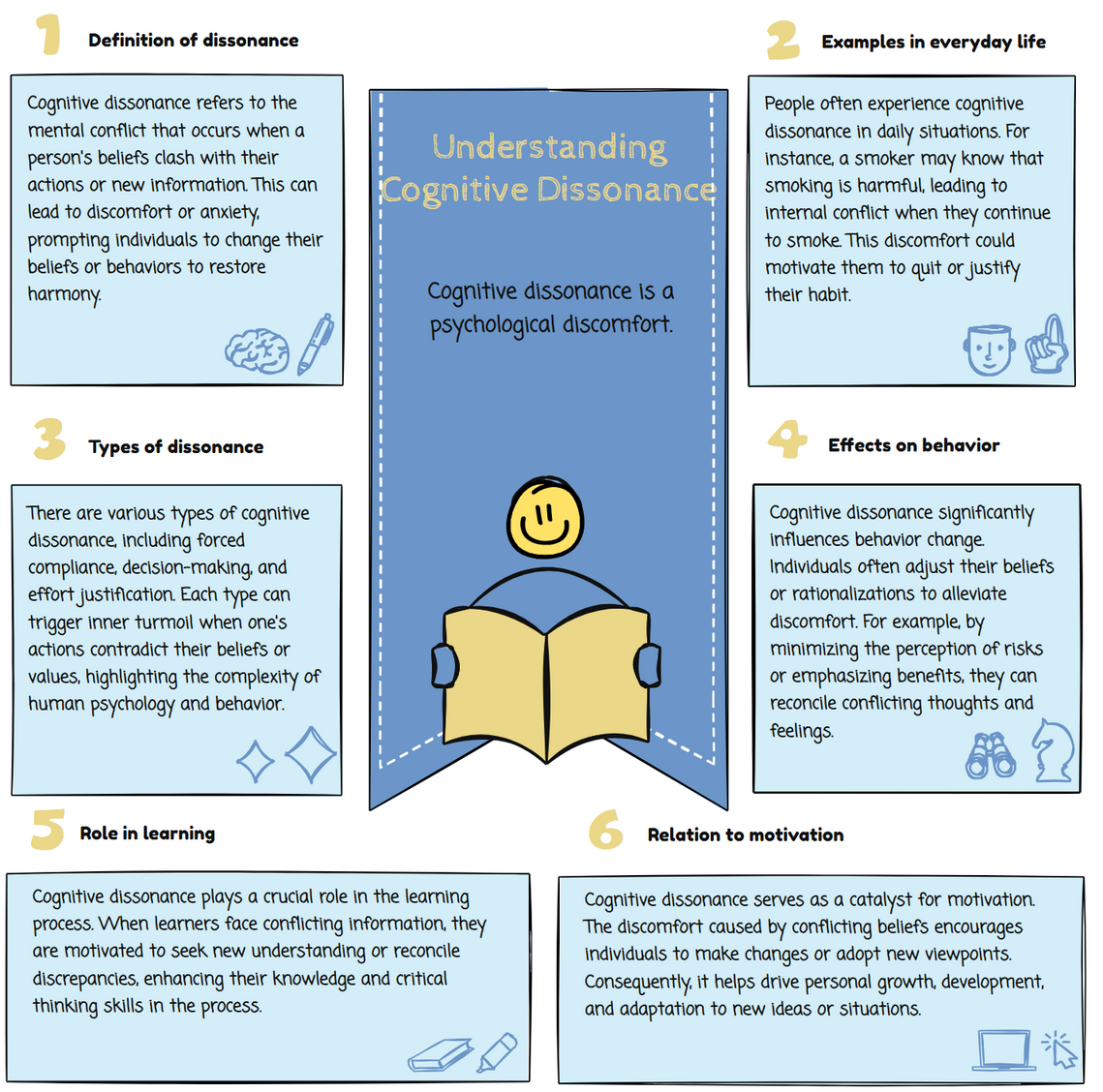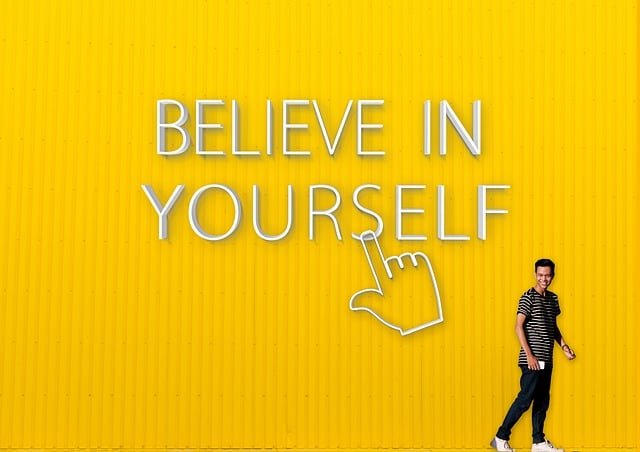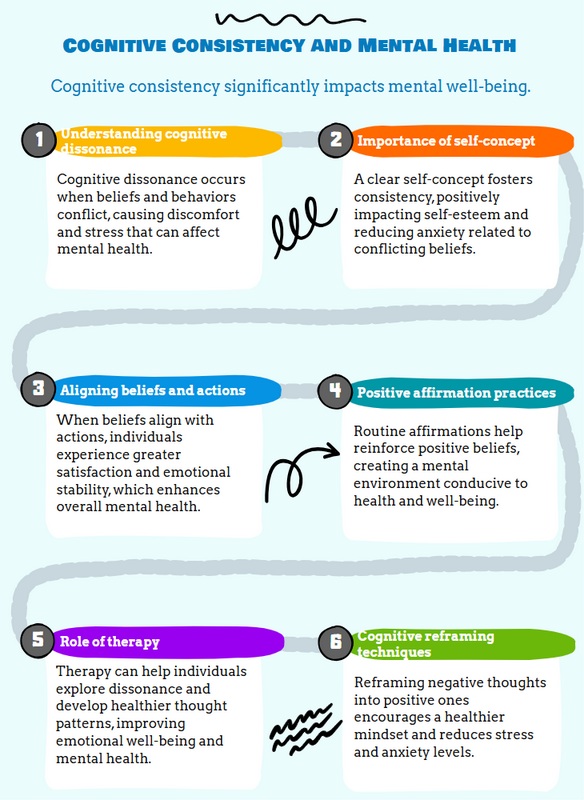
Ready to break free from mental conflicts? Discover how mastering cognitive dissonance can transform your life. Gain clarity, confidence, and inner peace now!
Introduction
Have you ever felt uncomfortable after making a decision that goes against your beliefs? Or found yourself justifying actions that don’t align with your values? If so, you’re not alone. You’ve experienced cognitive dissonance, a fascinating psychological phenomenon that affects us all. In this blog post, we’ll explore the concept of cognitive dissonance, its impact on our daily lives, and how we can utilize this awareness to foster personal growth and make better decisions.
What is Cognitive Dissonance?

Cognitive dissonance is the mental discomfort we experience when our thoughts, beliefs, or behaviors contradict each other. This internal conflict occurs when we hold two or more inconsistent cognitions (ideas, attitudes, or opinions) simultaneously. The theory of cognitive dissonance, first proposed by psychologist Leon Festinger in 1957, suggests that we have an innate drive to reduce this discomfort by aligning our thoughts and actions.
For example, imagine a person who believes in environmental conservation but frequently uses single-use plastics. The inconsistency between their belief and behavior creates cognitive dissonance, leading to psychological discomfort.
The Origins of Cognitive Dissonance Theory
Cognitive Dissonance Theory emerged from Leon Festinger’s groundbreaking work in social psychology. Festinger’s research was inspired by a UFO cult that believed the world would end on a specific date. When the prophecy failed, instead of admitting their mistake, many cult members intensified their beliefs, claiming their faith had saved the world.
This observation led Festinger to develop the theory of cognitive dissonance, which explains how people strive to maintain internal consistency in their beliefs and behaviors. The theory has since become a cornerstone of modern psychology, influencing our understanding of human behavior, decision-making, and the process of attitude change.
Common Examples of Cognitive Dissonance
Cognitive dissonance manifests in various aspects of our lives. Here are some common examples:
- Healthy choices: Knowing the importance of exercise but leading a sedentary lifestyle.
- Environmental concerns: Worrying about climate change while driving a gas-guzzling vehicle.
- Political beliefs: Supporting a politician despite disagreeing with some of their policies.
- Work-life balance: Valuing family time but consistently working long hours.
- Ethical consumerism: Opposing animal cruelty while purchasing products tested on animals.
These situations create internal conflict, leading to discomfort and the need for dissonance reduction.
How Cognitive Dissonance Affects Our Daily Lives
Cognitive dissonance influences our decision-making processes, attitudes, and behaviors in significant ways:
- Justification of choices: We often rationalize our decisions to reduce dissonance, even when they contradict our beliefs.
- Confirmation bias: We tend to seek information that supports our existing beliefs while ignoring contradictory evidence.
- Attitude change: Sometimes, we modify our attitudes to align with our behaviors, reducing internal conflict.
- Selective exposure: We may avoid situations or information that could lead to increased cognitive dissonance.
- Self-perception: Our actions can shape our self-image, leading to changes in our beliefs and attitudes.
Understanding these effects can help us make more informed decisions and align our actions more effectively with our values.
Strategies for Reducing Cognitive Dissonance

Cognitive Dissonance Can Lead to Positive Change
While often viewed negatively, cognitive dissonance can catalyze personal growth and positive behavioral changes. When individuals experience discomfort due to conflicting beliefs or actions, they may be motivated to make improvements in their lives to align their thoughts and behaviors.
When faced with cognitive dissonance, people employ various strategies to reduce psychological discomfort:
- Change the conflicting belief: Modify one of the inconsistent cognitions to align with the other.
- Add new beliefs: Introduce new information that bridges the gap between contradictory cognitions.
- Reduce the importance of the conflicting belief: Downplay the significance of the inconsistency.
- Change behavior: Adjust actions to align with beliefs and attitudes.
- Seek social support: Find others who share similar conflicting beliefs to validate one’s position.
While these strategies can alleviate discomfort, it’s essential to critically examine our choices and ensure they align with our core values.
The Role of Cognitive Consistency in Mental Health

Cognitive consistency, the opposite of cognitive dissonance, plays a crucial role in maintaining mental well-being. When our thoughts, beliefs, and actions are in harmony, we experience:
- Reduced stress and anxiety: Consistency between our beliefs and behaviors leads to less internal conflict.
- Improved self-esteem: Aligning our actions with our values boosts self-confidence and self-worth.
- Better decision-making: Consistent cognitions enable us to make choices that align with our true beliefs and goals.
- Enhanced relationships: Authenticity and consistency in our interactions foster stronger connections with others.
- Greater life satisfaction: Living in alignment with our values contributes to overall happiness and fulfillment.
By striving for cognitive consistency, we can improve our mental health and lead more authentic lives.
Overcoming the Attitude-Behavior Gap
The attitude-behavior gap refers to the discrepancy between what people claim to value or believe and their actual behavior. This gap is a common source of cognitive dissonance. To bridge this gap and reduce dissonance:
- Increase self-awareness: Regularly reflect on your beliefs, values, and actions to identify inconsistencies.
- Set realistic goals: Break down larger objectives into manageable steps to align your behavior with your attitudes.
- Practice mindfulness: Pay attention to your thoughts and actions in the present moment to make conscious choices.
- Seek accountability: Share your goals with others who can support and encourage you to stay consistent.
- Embrace imperfection: Recognize that complete consistency is challenging and focus on progress rather than perfection.
By addressing the attitude-behavior gap, we can reduce cognitive dissonance and live more authentically.
Conclusion: Embracing Cognitive Dissonance for Personal Growth
Cognitive dissonance, while often uncomfortable, can be a powerful catalyst for personal growth and positive change. By recognizing and addressing the inconsistencies in our thoughts and actions, we can:
- Develop greater self-awareness
- Make more informed decisions
- Align our behaviors with our core values
- Improve our mental well-being
- Foster authenticity in our relationships and daily lives
Instead of avoiding cognitive dissonance, embrace it as an opportunity for self-reflection and improvement. By doing so, you’ll be better equipped to navigate life’s complexities and make choices that truly reflect who you are and who you want to be. This journey of self-discovery can lead to significant personal growth and positive change.
What areas of your life do you experience cognitive dissonance? How can you use this awareness to promote personal growth and positive change? We’d love to hear your thoughts and experiences in the comments below! Sharing your journey can inspire others and foster a sense of community.

Leave a Comment
Your email address will not be published. Required fields are marked *